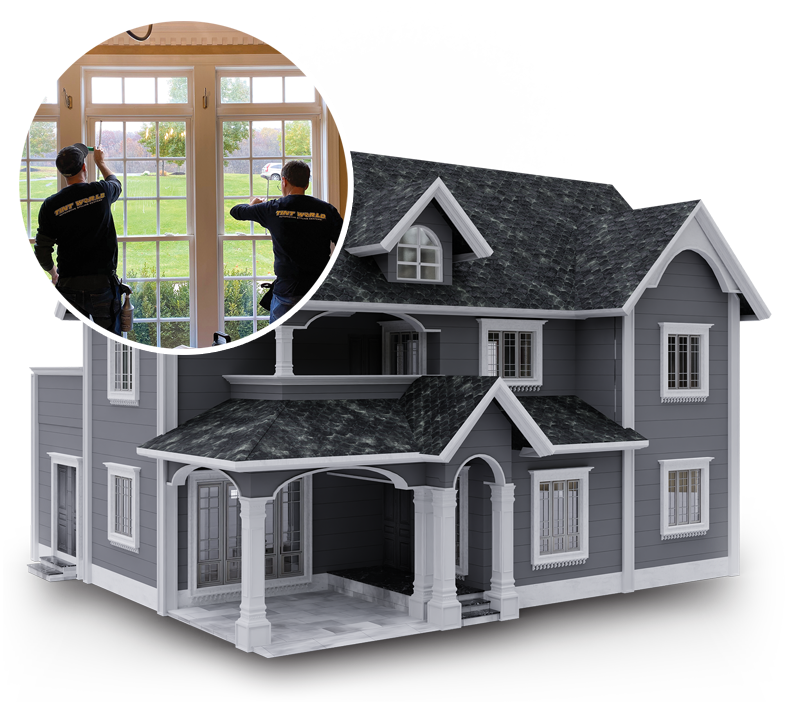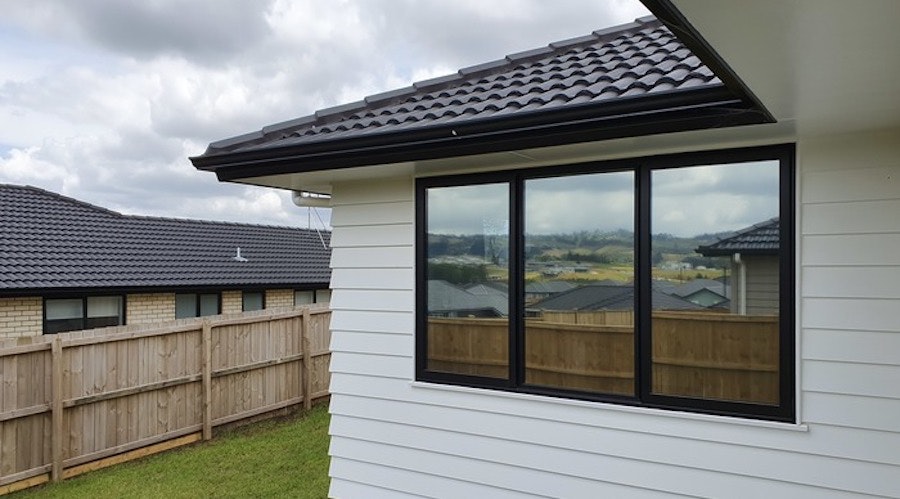Why Residential Window Tint is Perfect for Office and Research Studies
Why Residential Window Tint is Perfect for Office and Research Studies
Blog Article
Just How Residential Window Tinting Boosts Your Home's Power Performance
Residential window tinting presents a compelling option for house owners looking for to enhance power efficiency within their living spaces. By applying specialized movies to windows, it efficiently minimizes heat transfer, therefore supporting interior temperature levels and reducing the demand for excessive heating or cooling.
Recognizing Window Tinting
Comprehending home window tinting is essential for property owners seeking to improve both convenience and energy efficiency in their home. Residential Window Tint. Window tinting includes the application of a slim film to the inside or exterior surface of glass home windows. This film can dramatically modulate the quantity of sunshine and warmth that goes into a home, therefore influencing interior climate conditions
There are different types of window tinting films available, each with unique buildings. The effectiveness of window tinting is usually gauged by its Visible Light Transmission (VLT) percent, which suggests exactly how much light can pass via the movie.
Advantages of Energy Efficiency
Home window tinting not only boosts appearances yet likewise plays a substantial role in enhancing power effectiveness within property spaces. By decreasing warmth transfer with windows, colored movies develop an extra secure interior environment, which can bring about significant decreases in power intake for cooling and heating. This power effectiveness equates into lower utility bills, giving homeowners with significant long-lasting cost savings.

In addition, window tinting boosts the convenience of living rooms. By decreasing glare and blocking harmful UV rays, colored windows produce a more enjoyable atmosphere, which can cause improved wellness for residents. The defense versus UV rays additionally assists protect furniture and floor covering from fading, adding to the longevity of house items.
Just How Tinting Works
Tinting films operate through a combination of innovative materials and technologies made to control the quantity of solar energy going into a home. Mostly made up of polyester, these films typically incorporate metal or ceramic bits that take in and show heat. This double capacity permits them to significantly reduce the infiltration of ultraviolet (UV) rays and infrared radiation while allowing visible light to travel through.
The performance of home window tinting is determined by its solar warm gain coefficient (SHGC), which shows how much solar energy is transferred through the window. Reduced SHGC worths are more suitable as they represent greater warm denial. In addition, window colors can feature a range of shades, enabling homeowners to tailor their aesthetic preferences while enhancing energy performance.
Furthermore, these movies function as a barrier, preventing heat loss during chillier months by mirroring interior warmth back right into the space. This thermal insulation effect matches the cooling benefits obtained during warmer months, contributing to a well balanced interior environment year-round. By managing solar energy successfully, residential window tinting not only boosts convenience you could check here yet additionally plays an essential role in reducing energy intake and lowering utility expenses.
Picking the Right Color

There are numerous kinds of window movies readily available, including dyed, metalized, and ceramic. Colored films are economical but might have restricted resilience. Metalized films supply far better warmth denial but can hinder electronic signals. Ceramic movies offer outstanding warmth control without endangering presence and are extremely durable, making them a popular selection.
Visible light transmission (VLT) is an additional crucial element, as it suggests the amount of all-natural light that can pass with the tinted glass. Home owners ought to pick a tint with a VLT that matches their illumination preferences while still supplying sufficient glow decrease.
Furthermore, examining the solar warm gain coefficient (SHGC) can help determine just how well a color can obstruct heat from sunshine. A reduced SHGC suggests far better heat control, inevitably enhancing energy effectiveness.
Setup and Upkeep Tips
Proper installment and upkeep are crucial parts in making the most of the advantages of domestic home window tinting. To achieve optimal results, it is a good idea to work with a certified professional for installment. This guarantees that the color is used properly, staying clear of air bubbles, wrinkles, or misalignment that can compromise performance. Specialists also utilize specialized tools and techniques, which can improve the longevity and effectiveness of the color.
Adhering to setup, upkeep is important to prolong the life of the home window movie. It is suggested to wait at the very least 1 month before cleaning up the colored home windows to permit the glue to cure totally. When cleansing, utilize a soft cloth and a mild, ammonia-free cleaner to prevent damaging the movie. Stay clear of rough materials that might scrape the surface.
Dealing with these concerns without delay can stop further damage and preserve energy performance. By sticking to these setup and upkeep tips, homeowners can ensure their window tinting proceeds to offer substantial energy savings and comfort for years to come.
Conclusion
In final thought, household window tinting functions as an efficient option for improving power efficiency within homes. By lowering warm transfer and obstructing harmful UV rays, window films add to lower power intake and boosted interior comfort. The selection of proper tinting materials, in addition to proper setup and over at this website maintenance, better takes full advantage of these benefits. Ultimately, home window tinting represents a lasting investment that not just decreases energy costs but also advertises a comfy living atmosphere throughout the year.
Window tinting entails the application of a thin film to the inside or exterior surface area of glass windows. By lowering heat transfer with home windows, tinted movies produce a next page much more stable indoor environment, which can lead to substantial decreases in energy intake for home heating and cooling.The effectiveness of window tinting is gauged by its solar heat gain coefficient (SHGC), which indicates how much solar energy is sent through the window. By taking care of solar power successfully, household window tinting not just boosts comfort but likewise plays an important duty in decreasing power usage and reducing utility expenses.
By lowering warmth transfer and obstructing dangerous UV rays, home window films add to lower power consumption and enhanced indoor comfort.
Report this page